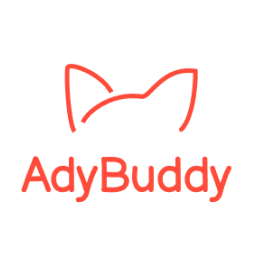Hi, I'm Darwin
Software Developer
Berlin, Germany
Project AdyBuddy

AdyBuddy is a mobile application developed for obesity prevention of children and young teenagers, involving their family and/or friends to bring about effective sustainable changes in their nutritional and exercise behavior through weekly challenges.
Goal
In the past 50 years, overweight and obesity have steadily increased in the global population. Those affected have a higher risk of numerous concomitant diseases such as diabetes, cardiovascular diseases and certain types of cancer. Despite the ever-increasing offers of support for weight reduction, it is usually not possible to achieve substantial and, above all, long-term weight loss. Paradoxically, obesity rates are even continuing to rise. This trend has also been significantly reinforced by the Corona pandemic.
Especially the youngest in our society are affected: more and more children show first signs of obesity. When these children reach adulthood, they often have to struggle with severe overweight. Therefore, to successfully prevent obesity, one needs to start at a young age. Furthermore it has been shown that sustainable behavioral changes in diet or sports habits can only be achieved if the direct environment participates.
That's where AdyBuddy comes in: our application is aimed at children and teenagers and their family or friends. It challenges them in a fun way to change their habits around nutrition and exercise and improve their knowledge on the topic, involving the entire personal environment. Together, they work towards the goal of living a little more consciously and healthily each week, thus counteracting obesity and disease in the long term.
Team
To achieve the best results in the limited time, we initially formed three teams with a total of 7 students:
- One team was mainly responsible for conceptual work, research and UX.
- The second started with the development of the frontend.
- A seperate team set up the development environment for the backend and implemented the required logic.
All of us participated in a long initial conceptual period within the first four weeks, followed by a couple of weeks where everyone worked in one of the teams described. After that, everyone worked wherever there was work to be done at the time - there were no longer strict teams. That meant that everyone could gain experiences in areas that they were interested in during the project.
My work
I was a member of the backend team, consisting of two students. While my teammate also worked on UI and research tasks, I took on significant responsibility by programming the majority of the backend. We utilized NodeJS and MongoDB to develop a REST API that facilitated communication with the frontend.
Specifically, my responsibilities included implementing user authentication, managing weekly challenges, calculating user progress, and integrating team functionality. Additionally, I ensured that all API endpoints adhered to validation standards using the npm package joi.
Furthermore, I was in charge of deploying the backend onto a server provided by our supervisor.